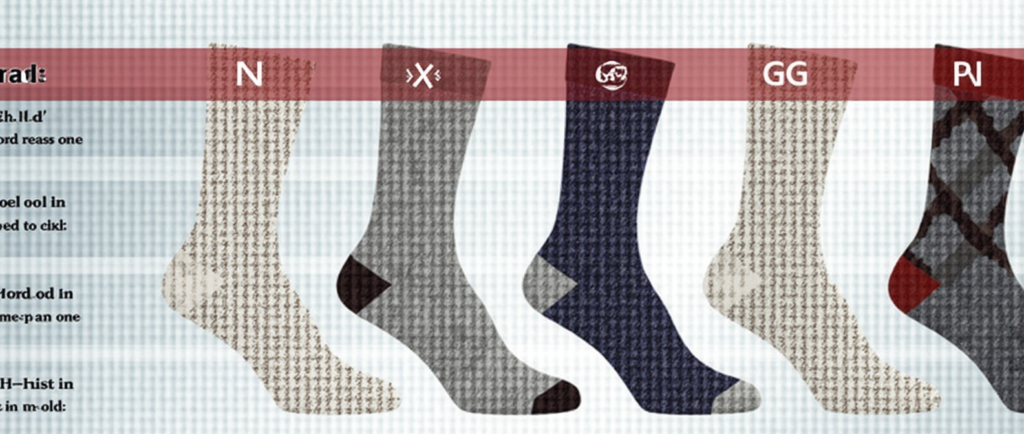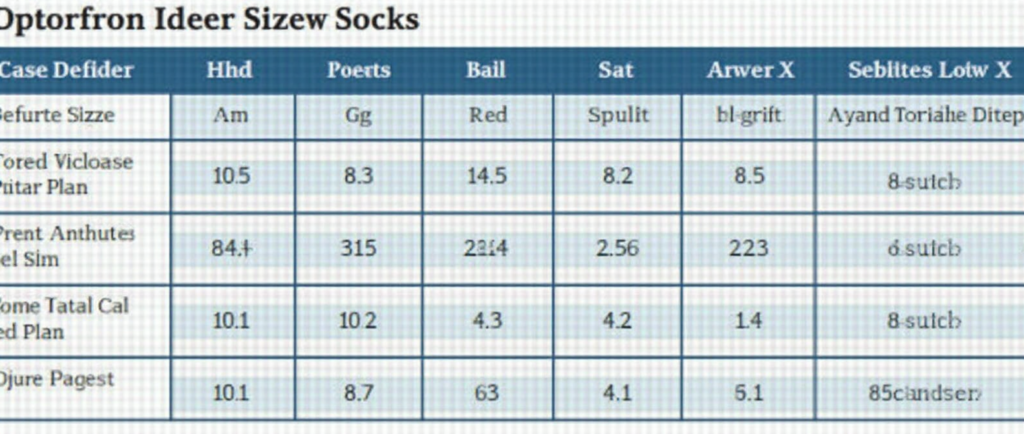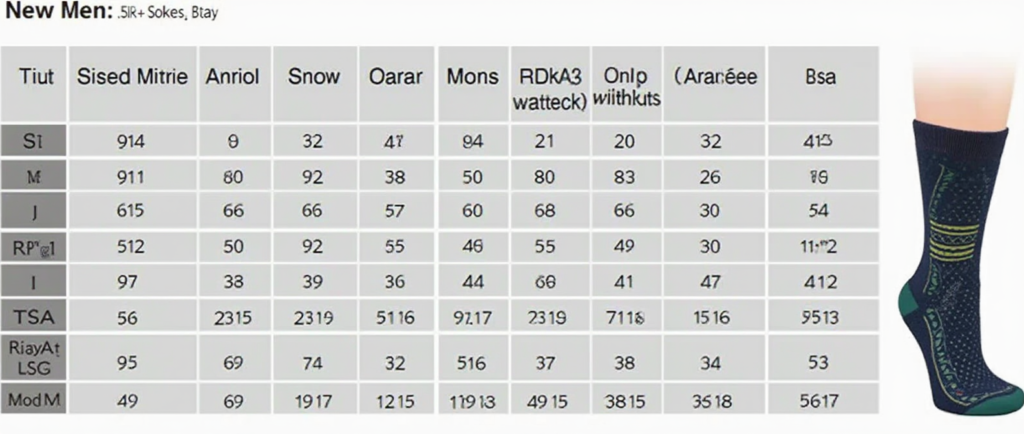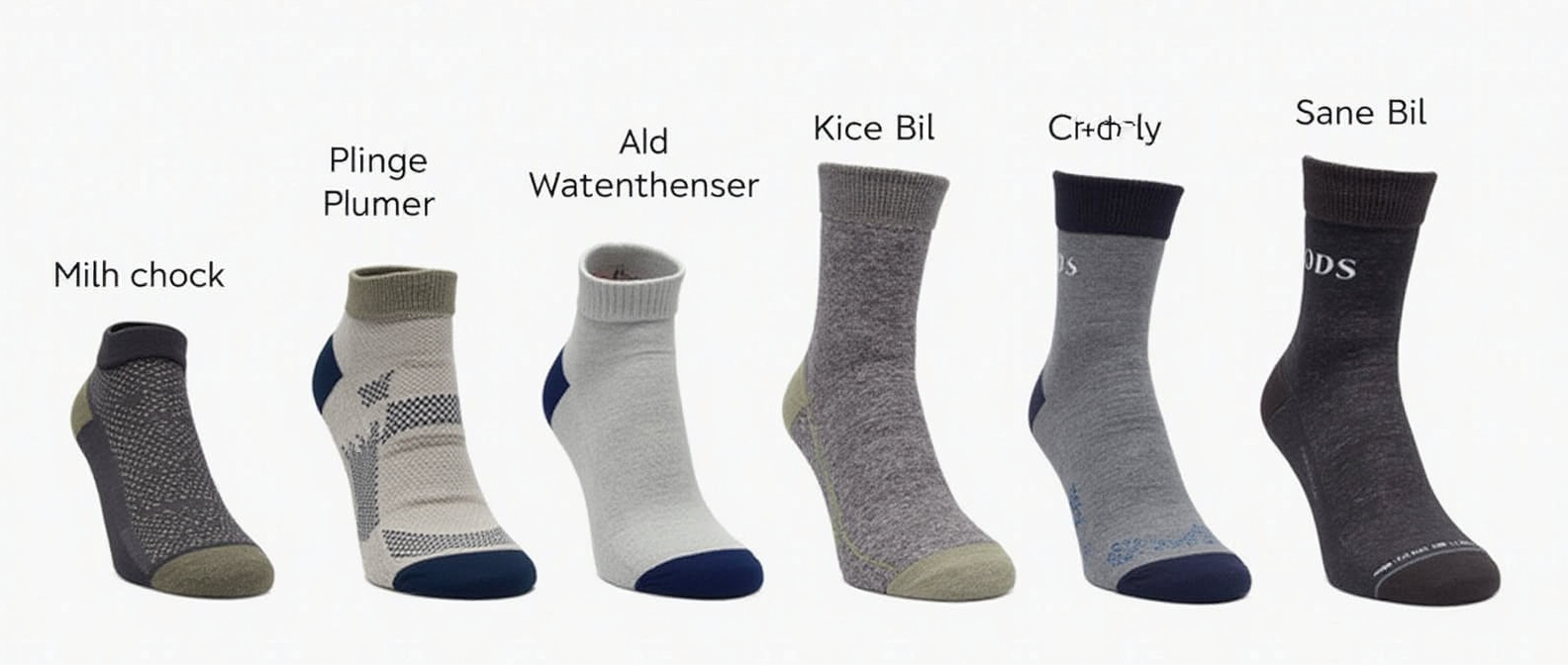Did you know 63% of men wear socks that don’t fit right? This shows how hard it is to find the right size. Wearing the right socks is key for comfort and foot health. In this guide, we’ll make men’s sock sizes easy to understand. You’ll learn how to pick the perfect fit for your needs.
Finding the right sock size can seem tough, but it’s not. By the end of this article, you’ll know how to choose the best size. Whether you need athletic, dress, or casual socks, we’ve got you covered. You’ll discover how to get a fit that’s both comfortable and tailored just for you.
Table of Contents
Understanding Basic Mens Sock Sizes
Finding the right socks is key. Knowing about men’s sock sizes is important. Different places use different sizing systems, making it tricky to shop. Let’s look at US and European sizes and how shoe size relates to sock size.
US vs. European Sizing Systems
In the US, men’s sock sizes range from 6 to 15, with each number being 1 apart. The European system, however, goes from 35 to 50, with numbers 1 or 2 apart. Even though the numbers look different, switching between the two is easy.
The Relationship Between Shoe Size and Sock Size
Generally, a man’s sock size matches his shoe size. A man with a shoe size of 10 usually wears a sock size of 8-9. But, this can change based on foot size and personal taste.
Common Size Ranges Explained
- Small: Sock sizes 6-8 (US), 35-40 (EU)
- Medium: Sock sizes 9-11 (US), 41-43 (EU)
- Large: Sock sizes 12-14 (US), 44-46 (EU)
- X-Large: Sock sizes 15+ (US), 47-50 (EU)
Knowing these size ranges helps men find the best fit. This ensures they stay comfortable all day.

The Complete Sock Size Chart Guide
Finding the right sock size can seem hard, but don’t worry. This guide will help you find the perfect fit. Whether you’re looking for mens sock sizes or need a size conversion, we’ve got you covered.
Understanding the link between shoe size and sock measurements is key. We’ve made a detailed size chart for US, UK, and European sizes. This makes finding the right sock size easy.
| US Shoe Size | UK Shoe Size | EU Shoe Size | Sock Size |
|---|---|---|---|
| 6 | 5.5 | 39-40 | 6-8 |
| 7 | 6.5 | 40-41 | 7-9 |
| 8 | 7.5 | 41-42 | 8-10 |
| 9 | 8.5 | 42-43 | 9-11 |
| 10 | 9.5 | 43-44 | 10-12 |
| 11 | 10.5 | 44-45 | 11-13 |
| 12 | 11.5 | 45-46 | 12-14 |
With this sock size chart, finding the right size is easy. It works for any brand or style. Say goodbye to ill-fitting socks.
Keep in mind, this chart is a general guide. Your foot shape and personal preference might need a bit of adjustment. Always choose comfort and a fit that’s snug but not too tight.
Essential Measurements for Perfect Sock Fit
Finding the right sock size is key for foot health and comfort. To get the perfect fit, you need to measure three things: foot length and width, ankle and calf size, and arch support.
Foot Length and Width Considerations
Start by measuring your foot length and width. This helps pick the right sock size for a snug fit. Use a ruler or tape to get accurate measurements. Then, check size charts to find the best match for your foot.
Ankle and Calf Circumference
Don’t forget to measure your ankle and calf too. Socks that fit too loosely can slip, while tight ones can be uncomfortable. Measure the widest part of your ankle and calf to find the perfect fit.
Arch Support Measurements
Arch type is also important for sock choice. People with different arch types need different support levels. Choose socks that match your arch type for comfort and to prevent foot fatigue.
| Foot Measurement | Ankle Circumference | Calf Circumference | Arch Type |
|---|---|---|---|
| 9 inches | 8 inches | 12 inches | Medium |
By focusing on these key measurements, you can find socks that fit perfectly. This ensures comfort, support, and performance for your feet.

Different Sock Styles and Their Sizing Requirements
Finding the perfect sock fit is all about the style. Each type, from athletic to dress socks, has its own sizing needs.
Athletic sock sizes focus on a snug, supportive fit for active wear. They use high-performance fabrics and have features like arch support and moisture-wicking.
Dress sock dimensions aim for a formal look. They are thinner and more streamlined, designed to fit well under dress shoes.
Crew sock lengths vary a lot. Crew socks, which reach mid-calf, need different sizing than ankle or knee-high socks.
Understanding each sock type’s sizing is key for a comfortable fit. Measuring your feet and choosing the right size ensures a perfect fit and enhances performance.
- Athletic socks often prioritize a snug, supportive fit for physical activities.
- Dress socks are designed for a more streamlined, formal appearance under dress shoes.
- Crew sock lengths require a different sizing approach compared to ankle or knee-high socks.
“Investing in the right sock size can make a significant difference in your overall comfort and confidence.”
Considering the unique sizing needs of different sock styles ensures a tailored fit. This boosts your style and performance.
Common Sizing Mistakes to Avoid
Finding the perfect fit for your socks is key. Avoiding common sizing errors is crucial. These include size conversions, material stretch, and brand differences. Knowing these can make your sock-wearing experience comfortable and seamless.
Size Conversion Errors
One big challenge is the difference between US and European sizing. What fits well in one country might not in another. Learning the conversion between these systems can prevent the frustration of ill-fitting socks.
Material Stretch Factors
The material of a sock greatly affects its size and fit. Socks made from stretchy fabrics like nylon or spandex may feel tight at first but loosen over time. Wool socks need a more precise size to avoid discomfort. Knowing how different materials stretch can help you choose the right size.
Brand Variation Issues
Different sock brands have their own size charts and fits. What fits one brand might not fit another. Checking brand-specific sizing guides and reviews can help you find the right size for your favorite brand.
By avoiding these common sizing mistakes, you can confidently find the perfect sock. Whether you’re looking for sock sizing errors, considering material considerations, or exploring brand differences, you’ll get the right fit.

How to Measure Your Feet for Accurate Sock Sizing
Finding the right sock fit is key for comfort and avoiding blisters. Measuring your feet at home is easy and can guide you to the perfect size. By following these steps, you can learn how to measure your feet accurately. This ensures a fit that’s both comfortable and tailored to you.
- Gather the necessary supplies: a sheet of paper, a pencil, and a ruler or measuring tape.
- Stand on the paper with your full weight, making sure your foot is flat and parallel to the ground.
- Trace the outline of your foot, ensuring the pencil follows the contours of your toes and heel.
- Measure the length of your foot from the heel to the longest toe, and record the measurement in inches or centimeters.
- For the width, measure the widest part of your foot and compare it to a standard sock size chart to determine your optimal fit.
Remember, foot size can change throughout the day. It’s best to measure your feet in the evening when they’re at their largest. With these simple DIY sizing techniques, you’ll find the perfect socks for all-day comfort and support.
Special Considerations for Athletic and Dress Socks
Finding the right sock fit is key, especially for athletic and dress socks. They have their own sizing needs. Knowing these helps you look good and feel comfortable, whether you’re working out or dressing up.
Sport-Specific Sizing Needs
Athletic socks are made for support and comfort during sports. They might not fit your shoe size exactly. They need to fit snugly around the foot and ankle for support and to keep sweat away.
For example, running socks fit tightly to prevent slipping. Basketball socks are looser for better breathability during quick movements.
- Choose athletic socks made for your sport, like “running” or “basketball,” for the best fit.
- Check the compression level, as it affects fit and support.
- Material matters too. Synthetic fibers like polyester or nylon are good for moisture-wicking.
Formal Wear Sock Requirements
Dress socks are all about looking polished. But, there are a few things to keep in mind. The length and how they fit around the calf are important.
- Dress socks should hit mid-calf or just above the ankle. This length looks good with formal clothes.
- They should fit snug but not too tight. This lets you move easily without them bunching up.
- The material, like wool, cotton, or silk, also affects comfort and style.
Understanding the sizing needs of athletic and dress socks helps you look and feel great. Whether you’re working out or dressing up, you’ll be comfortable and stylish.
Conclusion
Finding the perfect fit for your men’s socks is all about understanding sizing. You need to know the difference between US and European sizes. Also, the measurements that affect comfort are key.
This guide has given you the tools to make smart choices. Whether you’re looking for everyday socks or ones for specific activities, you’re ready. You’ll find the perfect fit that boosts your style and comfort.
Getting the right sock fit is essential for your well-being and style. Use what you’ve learned to pick socks that look good and feel great. Choose wisely, and enjoy the comfort of well-fitting socks.
FAQ
What is the difference between US and European sock sizing systems?
The US and European sock sizing systems use different scales. US sizes are generally smaller than European sizes. For example, a US size 10 sock might be a European size 43-44.
How do I determine my sock size based on my shoe size?
Shoe size and sock size are related but can vary by brand and style. Usually, your sock size is 1-2 sizes larger than your shoe size. Measuring your foot length and width helps find the best sock size for you.
What are the common sock size ranges for men?
Men’s sock sizes range as follows: – Small: US 6-8, EU 39-41 – Medium: US 8-10, EU 41-43 – Large: US 10-12, EU 43-45 – X-Large: US 12-14, EU 45-47
How do I measure my feet for proper sock sizing?
To measure your feet accurately, follow these steps: 1. Stand on a flat surface and place a piece of paper on the floor. 2. Place your foot on the paper and trace the outline. 3. Measure the length and width of the tracing to determine your foot size. 4. Use a sock size chart to find your corresponding sock size.
What are the key factors to consider for a proper sock fit?
For a proper sock fit, consider these factors: – Foot length and width – Ankle and calf circumference – Arch support – Material stretch and compression These measurements ensure your socks are comfortable and supportive.
How do the sizing requirements differ for athletic and dress socks?
Athletic socks need specific sizing for compression and moisture-wicking. Dress socks focus on a sleek look and may have narrower sizes. Choose the right size based on the socks’ intended use.
What are some common sizing mistakes to avoid when buying socks?
Avoid these common sizing mistakes: – Relying only on shoe size for sock size – Not considering material stretch and compression – Ignoring brand-specific size variations – Failing to measure feet accurately Understanding your true sock size and fit needs can help you avoid these errors.

